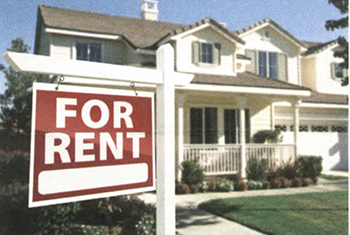Renting Out a Former Residence

Homeowners on the move sometimes decide to convert their principal residences into rental properties. Renting out a former home can be especially appealing when it can't be sold for an attractive price due to market conditions or when substantial future appreciation is anticipated. What arc the potential tax effects?
 Rental income and expenses
Rental income and expenses
These amounts are reported on the owner's income tax return. Deductible expenses include money spent on advertising, cleaning and maintenance, insurance, mortgage interest, real estate taxes, repairs, and utilities, as well as depreciation (a noncash item). Even if a rental property is "paying for itself," it. may show a tax loss for the year because of depreciation.
Passive activity losses
Your ability to currently use rental loss deductions may be limited by the tax law's passive activity (PAL) rules. However, a popular exception is available to individuals who OVvll at least a 10% ownership interest in the property and "actively participate" in the rental activity. In this situation, up to $25,000 of passive rent.allosses may be used to offset nonpasslve income, such as wages from a job. (The $25,000 loss allowance phases alit with morlified adjusted gross income, or MAGI, bet.ween $100,000 and $150,000.)
Sale of the property
Capit.al gain realized on the sale of a residence that has been converted into a rental property generally will be taxable. However, you might be able to exclude capital gain (wit.hin limit.s) if you sell t.he home while you still meet the conditions for excluding home sale gain. (To qualify for an exclusion, you generally must have owned and used the home as your principal residence for at least two of the five years preceding the sale.) Even then, a portion of the gain would be taxahle (due to tax rules related t.o allowable depreciation and periods of nonqualified usc).
If you are thinking of converting your residence to a rental property, contact us to discuss the tax implications.


